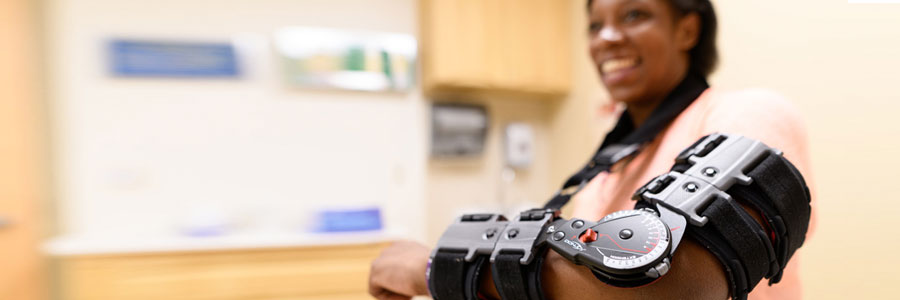Orthopaedic Trauma

Orthopaedic trauma is a comprehensive term that refers to any serious injury affecting part of the musculoskeletal system, which includes the bones, joints, ligaments, muscles and tendons. These injuries often stem from a sudden traumatic accident, such as a car wreck or fall, but can also be the result of a previous musculoskeletal injury that has become infected, failed to heal or healed improperly.
While some conditions can be treated nonoperatively, the majority of orthopaedic trauma cases require surgery and are managed by specialty-trained orthopaedic surgeons.
Types
- Fractures
- Fracture infections
- Stress fractures
- Malunions (a fracture that healed improperly)
- Nonunions (a fracture that fails to heal)
Symptoms
- A popping or cracking feeling
- Bruising
- Deformity or misalignment that is visible
- Loss of function
- Pain
- Swelling
Prevention
Orthopaedic trauma is often sudden and impossible to prevent. However, patients can lower their risk of experiencing a serious musculoskeletal injury by:
- Actively working to prevent falls
- Avoiding involvement in activities that increase their chance of injury
- Focusing on the road while driving and following the rules of the road
- Wearing the recommended safety gear for all activities during participation (wearing a helmet while biking, for instance)
Risk factors
- Involvement in activities that increase the chance of injury
- Older age, certain medications, a poor diet, an unsafe home environment, and other behaviors and activities that increase the risk of a fall
Diagnosis
- Review of medical records and physical exam. Providers will examine the affected area and, when possible, ask patients about their symptoms and medical history.
- Imaging. X-rays, MRIs, CT scans and other imaging techniques may be used to determine the location and severity of the injury.
- Additional tests. Orthopaedic trauma can often affect organs and other parts of the body beyond the musculoskeletal system. Depending on the severity, type and location of patients’ injuries, additional testing may be advised.
Treatment
- An immobilization device, such as a cast, splint or brace, may be used to help stabilize the injury and allow it to heal properly in cases where surgery is not required.
- Surgery is often necessary in order to reposition the bones and joints and to restore function.
- Reconstructive surgery may be recommended in order to help restore the appearance and function of the area(s) of the body affected by the injury.
Follow-up care
- After surgery, patients may be temporarily placed in an immobilization device, such as a cast, splint or brace, and will require rehabilitation.






